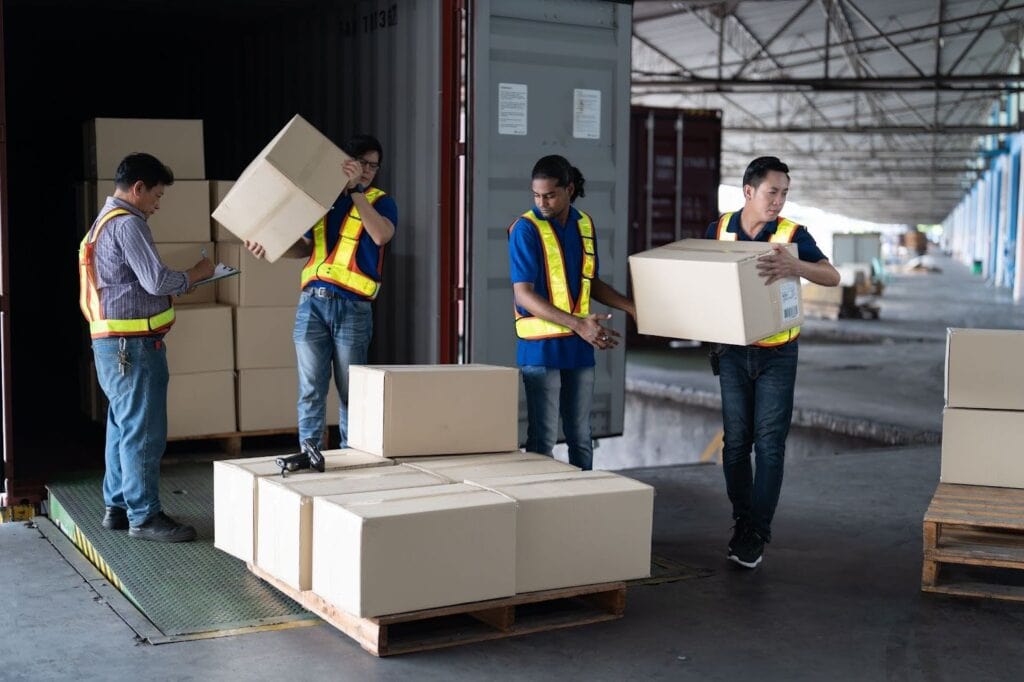Turnaround Time in Logistics: Definition, Importance, and How to Calculate

Turnaround Time (TAT) measures how long it takes to complete a process from start to finish. Logistics includes the time from arrival to departure and crucial steps in supply chain operations, such as warehouse intake or truck unloading. Understanding “what is Turnaround Time” will help improve operational efficiency and maintain a competitive edge.
Efficient turnaround time in logistics can significantly reduce operational costs and enhance customer satisfaction by ensuring timely deliveries. Poor TAT management leads to prolonged turnaround times, creating delays that increase operational costs and disrupt workflows. Turnaround logistics, which encompasses project planning, execution, and support, is crucial for ensuring safety, efficiency, and the availability of specialized equipment and resources in various industrial sectors.
In this blog, you’ll discover the significance of TAT, how it’s calculated, factors affecting turnaround time, ways to optimize it, and future trends that may reshape logistics management.
The Importance of Turnaround Time
Effective turnaround time in logistics strengthens overall operational efficiency and helps businesses stay competitive. Faster turnaround ensures seamless supply chain processes, boosts customer satisfaction, enhances service reliability, and prevents unplanned downtime. Meeting delivery expectations also builds trust and attracts loyal customers.
Shorter TATs also significantly reduce operational costs. Quick processes lower labor, fuel, and storage expenses, resulting in significant savings. Businesses that develop targeted strategies to enhance TAT can save money while maximizing output.
Companies with optimized TAT gain a competitive edge by ensuring smooth operations and reducing waiting time. Analyzing TAT patterns supports continuous improvement, preventing disruptions and minimizing delays.
How to Calculate Turnaround Time
TAT measures the time elapsed between a process’s start and end. Understanding how to calculate turnaround time helps companies improve workflows and minimize downtime.
Formula Example:
- TAT = Completion Time – Start Time
If a delivery truck arrives at 9:00 AM and leaves at 11:00 AM, the TAT is two hours.
Formula Explained
Completion Time: Marks when the process is finished (e.g., truck departure).
- Start Time: Indicates when the process begins (e.g., truck arrival).
- Time Elapsed: Total time taken to complete the task.
Using this turnaround time formula helps businesses track performance and pinpoint areas for improvement in warehouse logistics and supply chain operations.
Factors Affecting Turnaround Time
Depending on the industry and business model, multiple factors influence TAT. Streamlining these processes requires identifying potential bottlenecks and focusing on process optimization. Minimizing idle time during operations can significantly improve turnaround times and enhance overall operational productivity. Below are key elements that impact TAT.
Industry-Specific Factors
TAT differs widely across industries. Manufacturers rely on steady resource allocation to avoid production delays and minimize disruptions during emergencies, ensuring timely care.
Logistics companies prioritize fast truck turnaround time to prevent congestion and streamline processes. Power plants focus on plant turnaround schedules to reduce unplanned downtime and improve asset utilization. Plant turnarounds in industries like power generation are crucial as they involve thorough planning and coordination, identifying specific work requirements, engineering needs, and ensuring communication among all stakeholders to prevent delays and ensure efficiency.
Operational Factors
Outdated systems and understaffing increase the time elapsed during operations. Meticulous planning helps identify potential bottlenecks and enhance efficient management, ensuring that slow manual checks at a loading dock, for example, do not hinder truck turnaround and extend delivery schedules. Real-time monitoring tools also play a crucial role in this process.
Implementing post-turnaround reporting allows logistics teams to review performance, correct inefficiencies, and focus on continuous improvement for significant savings and faster overall service.
Timely Alerts
Proactive alerts notify teams about potential delays, reducing waiting time and enabling faster responses. Alerts about late shipments or task completion updates can significantly reduce turnaround times by improving coordination.
Automated notifications ensure teams respond quickly, minimizing disruptions and running supply chain operations smoothly. Implementing real-time monitoring systems enhances visibility, supports process optimization, and fosters smooth operations to achieve the desired outcome of faster TAT.
Process Complexity
Complicated workflows slow down TAT. Streamline workflows to reduce complexity and improve operational efficiency by identifying bottlenecks and standardizing processes. A warehouse with excessive manual steps or inefficient approval processes can lengthen completion time. Simplifying operations by automating repetitive tasks and consolidating unnecessary steps can optimize turnaround time.
Using tools such as automated barcode scanning in warehouse logistics improves accuracy and speeds up processing times. Reducing complexity enhances overall operational efficiency and prevents prolonged turnaround times that can disrupt the supply chain.
Communication & Collaboration for Customer Satisfaction
Disjointed communication leads to missed tasks and resource misallocation. Effective collaboration through scheduling tools and regular check-ins improves resource allocation and avoids duplicate efforts.
When stakeholders share real-time updates, teams can prevent unnecessary delays and ensure smooth operations. Clear roles, streamlined workflows, and ongoing status reports help teams identify potential bottlenecks and prevent delays, resulting in faster TAT, improved coordination, and better customer satisfaction.
Skill & Experience
Lack of experience can extend TAT due to errors and slower task completion. Skilled workers handle tasks faster, improving key metrics like lead time and minimizing downtime. Regular training programs sharpen employee expertise, increasing their ability to handle complex processes efficiently.
Businesses that develop targeted strategies for employee development see improvements in process optimization and faster resolution of tasks.
Steps to Reduce Turnaround Time in Logistics
Improving turnaround time in logistics requires adopting targeted strategies that address inefficiencies at every stage. These steps help enhance overall operational efficiency and minimize costly delays. Efficient turnaround times can be potentially leading to new business opportunities and improved client retention.
Plan Ahead
Effective planning aligns resources with demand, preventing delays. Logistics managers can forecast demand using historical data and scheduling tools to avoid unexpected bottlenecks. Incorporating buffer times for peak periods ensures operations stay on track. Additionally, dynamic air shelters play a crucial role in providing safe and efficient accommodations for manpower during industrial operations.
Resource Management
Managing human, technological, and material resources improves workflows. For example, using automated sorting systems in warehouses optimizes capacity and reduces errors, and a flexible workforce during busy seasons prevents slowdowns. Appropriate resource allocation ensures tasks are completed faster, contributing to significant savings and fewer costs.
Turnkey solutions are crucial in providing comprehensive and integrated logistics support for turnaround projects, ensuring safety, efficiency, and reliability from planning through execution and demobilization.
Scheduling and Coordination
Efficient scheduling prevents conflicts and optimizes staff usage. Coordinating shipment arrivals avoids congestion and improves truck turnaround time. Technology solutions, such as logistics apps, help plan routes and allocate time slots effectively. Real-time dashboards keep managers updated on progress, reducing the chance of missed steps.
Reducing Bottlenecks
Identifying potential bottlenecks is crucial for improving TAT. Common issues include inefficient loading processes or outdated software. Addressing these requires regular assessments and the use of real-time monitoring tools. Removing bottlenecks speeds up truck turnaround and ensures the desired outcome of faster deliveries and fewer disruptions in the supply chain.
Post Turnaround Reporting
Analyzing post-turnaround reporting reveals valuable insights into operational gaps. Tracking key metrics, such as cycle time and completion times, highlights performance trends that can be used to make informed decisions, help refine processes, and avoid repeated delays.
Reports can show how much time was spent on each phase, allowing managers to implement targeted strategies that shorten TAT.
Negotiate Window Times
Negotiating time slots for deliveries and pickups improves workflow efficiency. Flexible agreements with vendors or service providers prevent delays by adjusting delivery windows during peak hours. Shorter arrival times enhance operational efficiency and allow trucks to unload without a prolonged waiting time.
Incorporate New Tech
Integrating new technologies into logistics can revolutionize turnaround time management. Solutions such as GPS tracking, RFID systems, and automated inventory software ensure real-time monitoring of shipments. Technologies like AI-based route planning tools improve delivery accuracy and significantly reduce turnaround times.
Train Workforce
A well-trained workforce enhances operational speed and accuracy. Regular training on new technologies and workflows ensures employees stay competent. Simulation programs for truck drivers and warehouse staff enhance familiarity with logistics processes. A skilled team can minimize downtime and reduce errors in case of unexpected issues.
Vertical Integration
Vertical integration streamlines operations by managing multiple stages of the supply chain in-house. Controlling inbound and outbound logistics enhances process optimization and reduces handoff delays between vendors and transporters. Companies that adopt vertical integration see improvements in production schedules and lead time.
Outsourcing
Outsourcing non-core activities like fleet management or third-party warehousing can enhance focus on key logistics operations. However, outsourcing can introduce coordination challenges if not managed properly. Weighing the pros and cons helps logistics leaders decide. Clear contracts ensure external vendors contribute to minimizing turnaround times.
Automation
Automation enhances speed and accuracy by eliminating repetitive manual tasks. Automated loading systems, conveyor belts, and sorting machines improve warehouse logistics efficiency. Real-time data from automation tools helps managers track time elapsed and make adjustments instantly.
Future Trends
Emerging technologies continue to reshape logistics, making TAT optimization more achievable. Businesses that adopt these trends can improve supply chain operations and stay ahead of competitors. Drones also play a crucial role in improving efficiency and reducing turnaround times in the power generation sector, leading to substantial cost savings.
- Drones: Deliver goods faster by avoiding traffic and reaching remote areas, improving last-mile efficiency, and streamlining workflows.
- Scheduling Tools: AI-based tools enhance efficient management by optimizing delivery windows and reducing resource conflicts.
- GPS & Management: Advanced GPS systems provide real-time monitoring, helping drivers navigate faster and reduce arrival times.
- IoT: IoT sensors monitor conditions and locations in warehouse logistics, improving visibility and asset tracking.
- Machine Learning: Predicts delivery delays and optimizes routes to minimize downtime and enhance decision-making in business operations.
- Industry 4.0: Smart factories leverage interconnected machines to streamline manufacturing processes and shorten lead time.
- Blockchain Tech: Ensures transparent data sharing among stakeholders, improving traceability and reducing potential bottlenecks.
- Predictive Maintenance: Uses data to anticipate breakdowns and reduce unplanned downtime, leading to reduced downtime and better performance.
- 5G & Edge Computing: Supports faster data processing for real-time monitoring, enabling quicker decisions in complex logistics workflows.
Conclusion
Efficient turnaround time serves as a critical factor in improving operational efficiency and enhancing customer satisfaction. Streamlined logistics processes help avoid delays, reduce time elapsed, and ensure better asset utilization.
Shorter turnaround times translate into faster deliveries, lower operational costs, and fewer disruptions across the supply chain. Addressing potential bottlenecks and using targeted strategies, like predictive maintenance and enhanced scheduling, optimizes workflows and reduces downtime.
Adopting emerging technologies such as real-time monitoring and machine learning helps businesses remain competitive and achieve long-term success by ensuring timely delivery and smooth operations.


